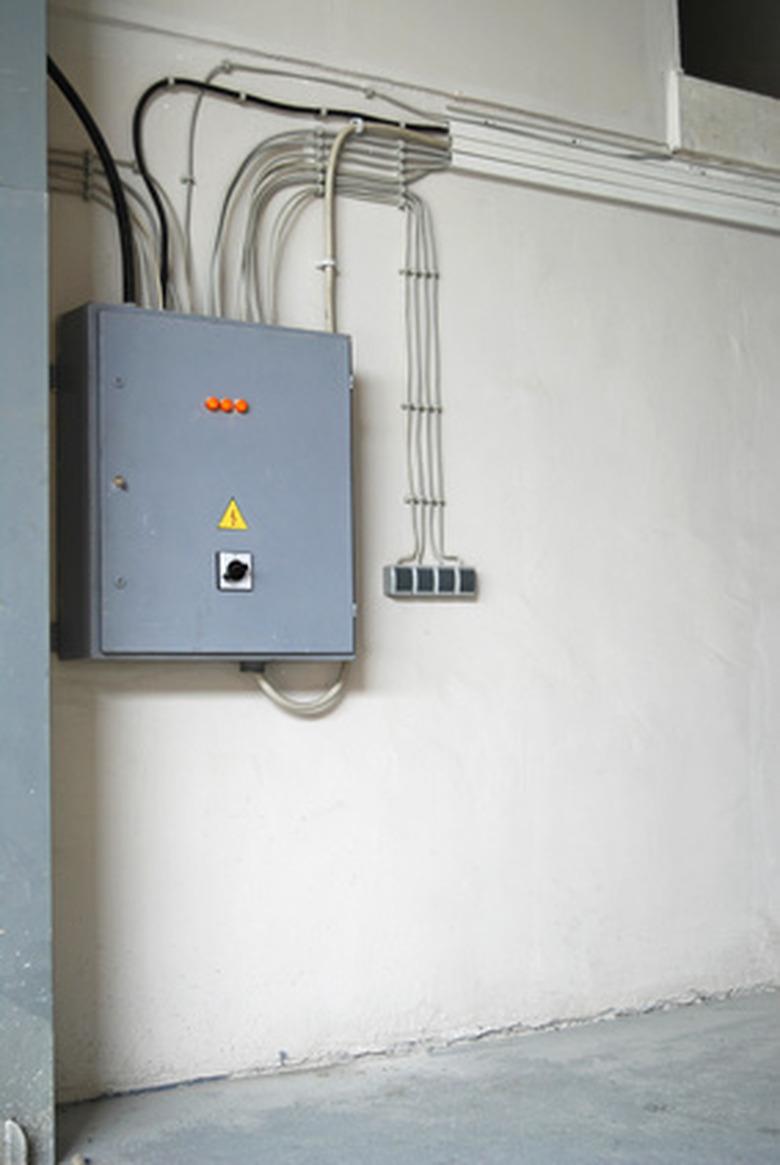What Causes A Breaker Box To Catch Fire?
Breaker boxes, or service entrances, are how electricity enters and is routed through your home. One large cable enters the box, and power is separated and routed through different ports and breakers for different circuits. Breaker boxes are safe when certified products are installed correctly. However, unsafe products or installations are in some homes and can lead to fire inside the breaker box. Always call an electrician if you are not familiar with electrical wiring.
Dangerous FPE Panels or Breakers
Federal Pacific Electric (FPE) Stab-Lock breakers and panels are known fire hazards, according to the Dallas Morning News. This is a concern because these electrical components were used across the U.S. from the 1950s through the 1980s. Federal Pacific Electric lost its Underwriters Laboratories listing, a "stamp of approval" for electrical safety compliance awarded to safe electrical items in the U.S.. FPE later went out of business. Many electrical inspectors will fail a house inspection if the home has FPE products, or they will require the homeowner to replace the product before the inspection will pass. Look at your breaker box and breaker labels to ensure yours is not from FPE. If it is, contact an electrician as soon as possible to have it inspected and replaced if necessary.
Damaged Components
Electrical components inside a breaker box don't last forever. If improperly installed, exposed to the elements or excessively damp conditions, breakers and breaker boxes can rust and degrade, failing sooner than they should. Degraded components are faulty and will eventually cause sparking and possibly fire, according to K.I. Security Enterprises. Although an electrical breaker box is designed for safety, it is not entirely fireproof. Sparks inside the box can set it on fire, and the fire can spread throughout your home quickly. Breakers are simple to inspect. Simply pop them out one at a time, and examine for corrosion or any other signs of deterioration. Replace bad breakers with new ones by popping a replacement into the empty slot.
Defective or Inappropriate Wiring
Wiring carries the electrical current into your home through the service entrance. If wiring is faulty, installed improperly or is damaged, it is a fire hazard. Although service entrances are usually grounded, they are still metal and prone to conducting electricity which can lead to fire inside the box. Inspect the thick, cable-type wiring that leads to the box from the outside power source for a frayed or damaged coating that exposes the wires. Older cables covered in fabric are more susceptible to damage and can also wick moisture into the box, notes Accu-Spec. Inside the box, look for (but don't touch) exposed wire and loose connections. Anywhere live electrical wire is exposed, a fire hazard exists. Inappropriate wiring in the form of too-small gauge or inappropriate material can also cause fire. Never exchange copper wire for aluminum or aluminum for copper. Review local codes to make sure your wiring is appropriate and installed securely.
